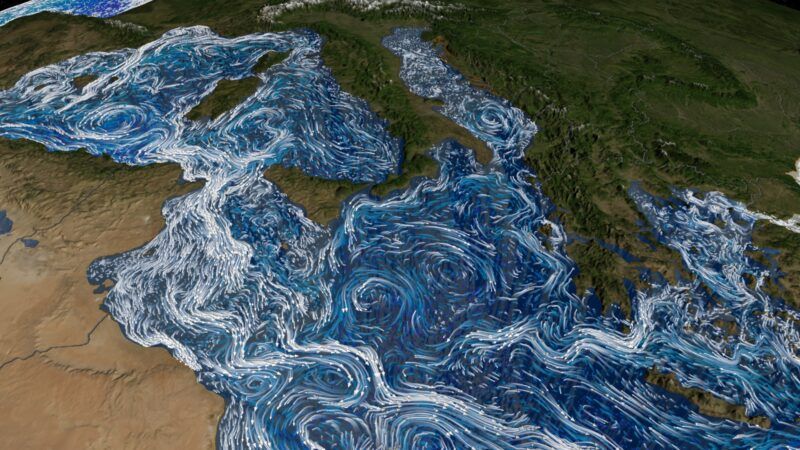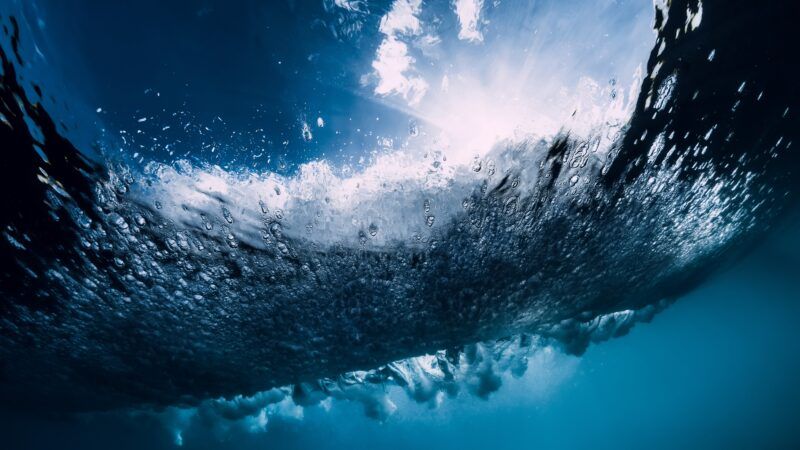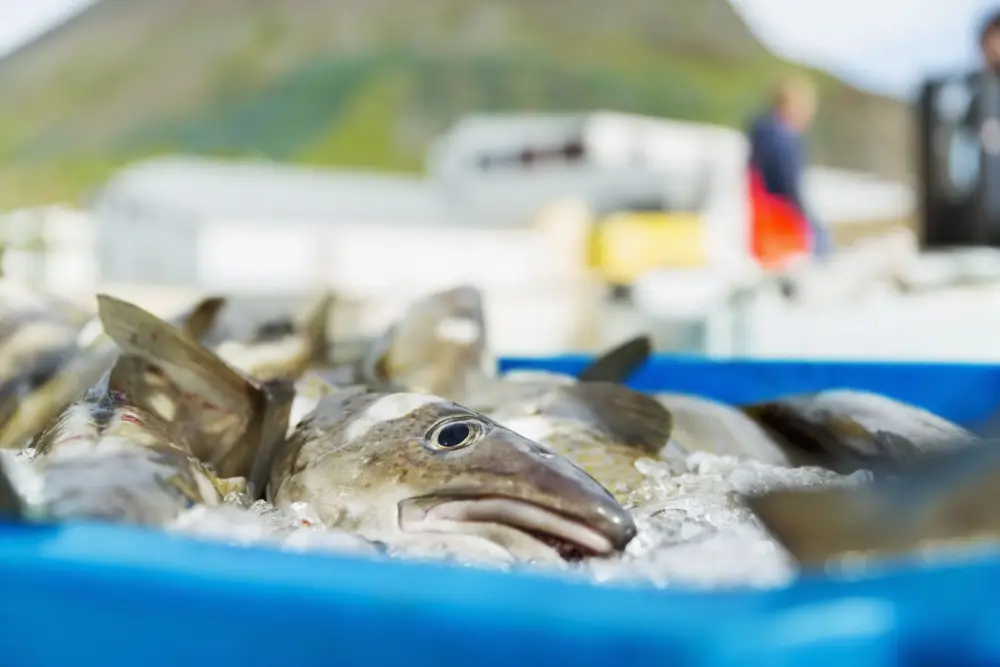 The amount of by-products from aquaculture in Europe is estimated to be approximately 1.5 million tonnes (Kerecis).
The amount of by-products from aquaculture in Europe is estimated to be approximately 1.5 million tonnes (Kerecis).
The blue circularity of fishing: how discarded fish is used to cure burns, produce energy and more
The fishing industry discards up to 35% of fish for consumption. The challenge of the blue economy is to harness the power of the sea's by-products, which can be used as raw material for a variety of applications, including creating skin grafts or generating energy. Fish, like pork, can be used for anything.
 The amount of by-products from aquaculture in Europe is estimated to be approximately 1.5 million tonnes (Kerecis).
The amount of by-products from aquaculture in Europe is estimated to be approximately 1.5 million tonnes (Kerecis).
According to the Food and Agriculture Organisation of the United Nations (FAO), by 2050 global food production will have to increase by 70% to supply the world's population, which will have reached 10 billion people.
This is the context in which the circular economy comes into play, which is set to be the solution to the expiry of natural resources and, on the other hand, a tool to counteract the increase in waste. In fact, the UN's "Food Waste Index 2021" report estimates that between 8% and 10% of global greenhouse gas emissions are associated with food that is not consumed.
Global aquaculture to grow by 15% by 2030
The world clearly needs more food, but it must be produced sustainably. And we are not just talking about agriculture and animal farming. Today, only about 7% of the protein consumed by humans comes from "blue food", i.e. food of aquatic origin. And this type of natural resource has much to contribute to everyone's future.

Global aquaculture has been growing at a rapid pace since 2010 and has great potential to continue to do so in a sustainable manner. Aquatic food production is expected to grow by a further 15% by 2030. This growth is necessary to provide a growing population with healthy and nutritious food. But this system, the FAO reminds us, must be circular. In other words, fish waste should not be thrown away, but caught and reused to ensure that no nutrients are lost to the global food system.
The idea, then, is simple: to feed the world, less fish must be wasted.
Marine by-products: raw material for the production of marine meal or feedstuffs
Fish intended for direct human consumption is generally processed to facilitate and speed up the consumers' dining experience. This "dressing it up" would explain, in part, why more than 35% of the fish caught is wasted.
At the same time, the amount of by-products from aquaculture in Europe is estimated at around 1.5 million tonnes.
But what is included in by-products? In the case of fish, we are talking about trimmings, skins, heads, bones, guts and blood.
Valuable components and the utilization of fish by-products
| By-Product | Valuable components | Utilized as |
| Heads | Proteins, peptides, lipids, collagen, gelatine, minerals including calcium, flavour | Food, fish meal, fish oil, food grade hydrolysates, animal grade hydrolysates, pet food, nutraceuticals, cosmetics |
| Frames (bones, flesh, fins) | Proteins, peptides, lipids, collagen, gelatine, minerals including calcium, flavour | Food, fish meal, fish oil, food grade hydrolysates, animal grade hydrolysates, pet food, nutraceuticals, cosmetics |
| Trimmings | Proteins, peptides, lipids | Food grade hydrolysates, animal grade hydrolysates, fish meal, fish oil, fuel, fertilisers |
| Viscera | Proteins, peptides, lipids, enzymes such as lipases | Food, fish meal, fish oil, food grade hydrolysates, animal grade hydrolysates, pet food |
| Skin (with belly flap) | Collagen, gelatine, lipids, proteins, peptides, minerals, flavour | Food grade hydrolysates, animal grade hydrolysates, fish meal, fish oil, fuel, fertilisers |
| Blood | Proteins, peptides, lipids, thrombin & fibrin | Fuel, fertiliser, therapeutants |
Source: Stevens, et.al. 2018
The challenge now is to make all the actors involved see that this waste is also a fantastic raw material from which, for example, fishmeal, marine feed and fish oil can be produced.
But not only that, the uses of fish waste also include, as the FAO points out, the following:
- Compost and manure (casings, frames and trimmings transformed into plant food)
- Pet food (waste meat and pet oils)
- Supplements (Omega-3, omega-6, marine collagen)
- Beauty (fish scales for lipsticks and glosses)
- Leather (tanning fish skins for use in shoes, handbags, etc.)
- Gelatine (used in pharmaceuticals or candy)
- Ink (cuttlefish dye from cuttlefish, squid ink for food)
Fish waste transformed into energy
On the other hand, there is another big field to explore: energy. It is already possible to convert non-recyclable waste materials into usable heat, electricity or fuel.
The conversion of non-recyclable waste materials into heat, electricity or fuel is already possible through processes such as combustion, gasification, pyrolysis, anaerobic digestion and landfill gas recovery.
In a non-circular system, waste is usually disposed of in landfill, so that all residual energy is lost. Waste-to-energy processes help to recover some of this energy, although it is known that reusing materials and avoiding landfill saves much more energy.
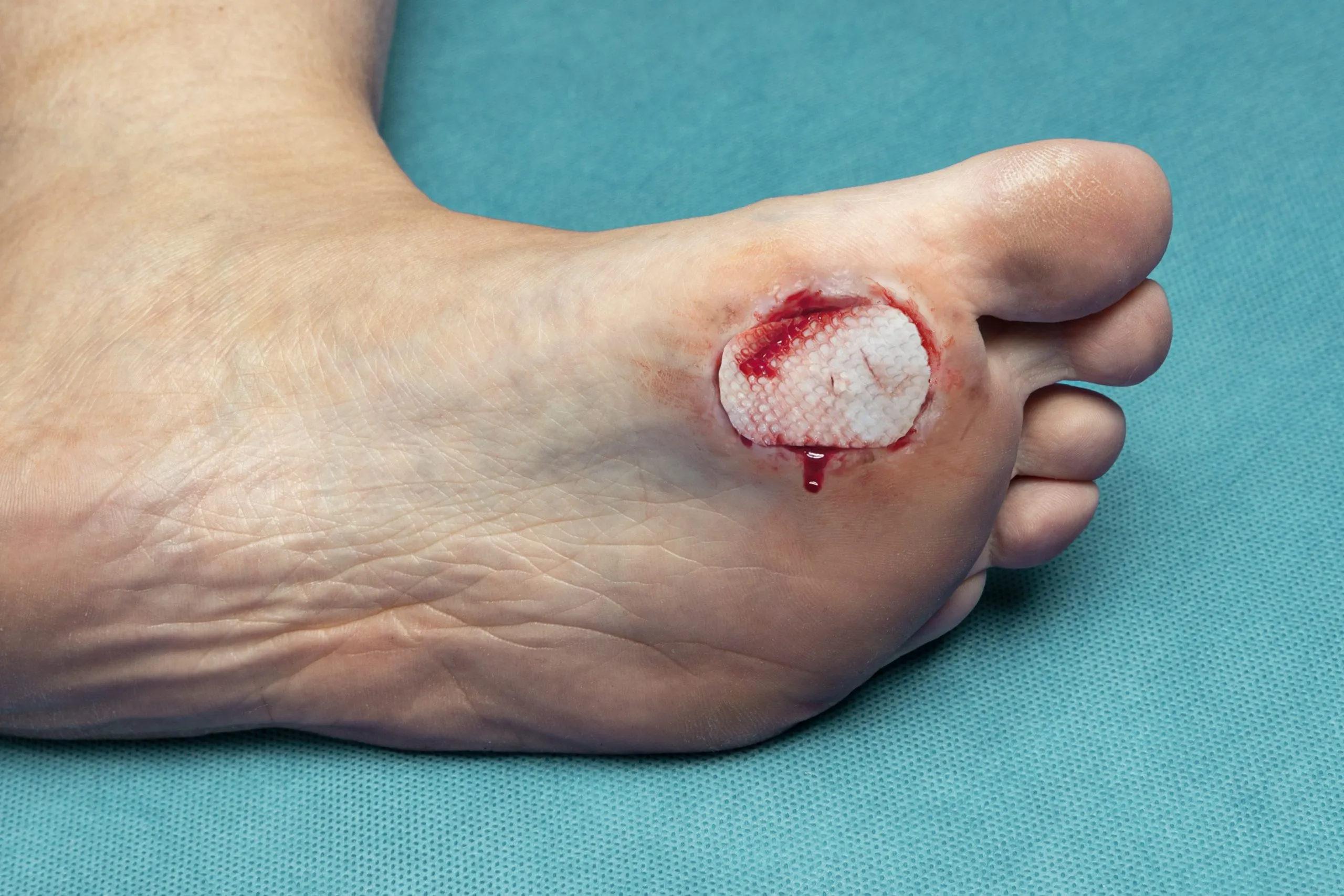
Even with these possibilities, fish waste is still excessive. Much of this by-product is under-utilised, wasted or discarded... and the situation must be reversed.
The Port of Barcelona, for example, has launched a project to recover its waste in order to analyse the feasibility of converting it into biofuel. This waste includes organic waste from food waste, especially from cruise ships and ferries, and, of course, waste from fishing activities.
A European project to develop new aquaculture utilisation concepts
The European WaSeaBi project, financed by the EU, aims to develop and test new concepts that guarantee the use of secondary flows from aquaculture, fishing and aquatic processing industries for the production of new products and ingredients.
The initiative, which involves the participation of several countries alongside Spain, such as Denmark, Belgium, France and Sweden, maintains that the current exploitation of aquatic biomass is minimal. Up to 70% of aquatic resources end up as secondary waste that is either used for low-value purposes, such as animal feed, or disposed of, which is costly for the companies involved. This calls for a more sustainable and commercially attractive exploitation of fish and other aquatic products.

WaSeaBi aims to optimise the utilisation of secondary seafood flows by developing storage solutions, sorting technologies and decision tools that ensure an efficient and sustainable supply system for by-catch and secondary flows from aquaculture, fisheries and aquatic processing industries.
This will allow the valorisation of these raw materials into marketable products. By addressing the secondary flows of the different raw materials that represent the typical aquaculture, fisheries and aquatic processing industries in Europe, WaSeaBi aims for a whole-chain perspective to be adopted in order to succeed with the high quality production of:
- bioactive peptides for nutraceutical, food and feed applications
- protein-based food ingredients
- mineral supplements for food and feed.
Among the companies that form part of the WaSeaBi consortium are the Spanish companies Barna, which has two plants that manage 60,000 tonnes of fish by-products per year and in which they have been producing traditional fishmeal and fish oils for years, and which have evolved to create single-species fishmeal, protein hydrolysates and fish oils with a high Omega 3 content (DHA - EPA).
AZTI, a Basque scientific and technological centre that develops high-impact transformation projects, such as innovation and development in all stages of the fishing and aquaculture value chain, is also part of this consortium.
The conversion of non-recyclable waste materials into heat, electricity or fuel is already possible through processes such as combustion, gasification, pyrolysis, anaerobic digestion and landfill gas recovery
Blue, circular and resource efficient economy
The global seafood sector is becoming more and more innovative, but the industry is a long way from being truly circular. The treatment of fish waste to create products in the health sector, to be used in the treatment of burns, ulcers, surgical and trauma wounds, is one of the latest developments towards making the best use of fish by-products.
An example of this is Kerecis, one of the companies that is part of the Iceland Ocean Cluster, which transforms fish skin into skin grafts for people and thus creates a real circular economy from fish by-products. This company promotes the use of 100% of the fish caught using by-products from the sea that are often wasted. Its daily business is to produce fish skin grafts in the small village of Isafjordur, 32 kilometres from the Polar Circle.
Specifically, he uses the skin of wild Atlantic cod (whose structure is similar to human skin) and turns it into odourless and sterilised skin grafts. This helps to accelerate the healing of wounds and burns. And not only that: it has managed to use up to 90% of each fish by using the parts of Atlantic cod in Iceland that were previously wasted. In other words, it boosts the blue and circular economy by using products from the fishing industry that would otherwise probably go to waste.
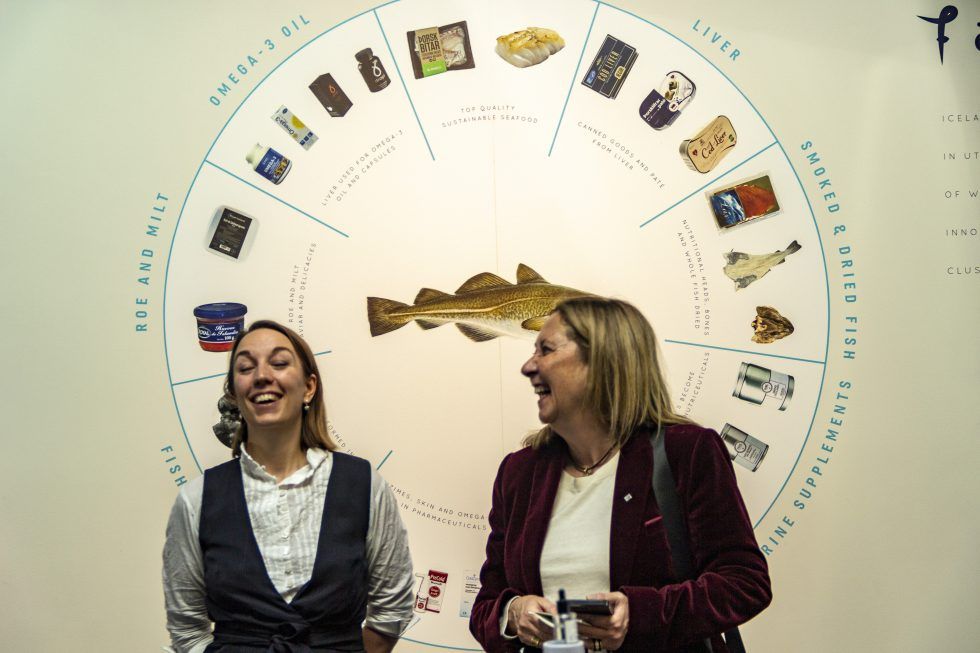
Technological innovation starts at sea
Iceland Ocean Cluster, founded in 2011, invests a lot of resources in new projects and companies such as Kerecis that value the marine sector and its role in the survival of the environment and the improvement of society. Biotechnology or the role of renewable energies and, of course, innovation and research come into play. Recognised internationally, the Cluster has, among others, the "100% Fish" programme, which last April representatives of the Generalitat de Catalunya went to see in detail with the aim of learning more about the growth of the blue and circular economy.
The Icelandic economy is clear: innovative health, pharmaceutical and even fashion products must be developed from wild fish stocks. This is the big opportunity for a country that already gets at least 30% more value from each cod than most developed countries. The "100% Fish" project demonstrates that fish is not just a fillet, it is also a liver that becomes a source of Omega 3 or a skin that becomes a health product.
This Icelandic model is a clear example of how technological advances in commercial fisheries have considerably improved product yields. In Iceland, in fact, since the 1990s the utilisation of fish by-products has increased by a factor of 30, the export value per kilogram of cod has increased by a factor of 4 and the range of different marine products has multiplied.
Today, Icelandic cod producers already utilise up to 80-90% of their raw material. This success will help to achieve many of the UN Sustainable Development Goals, such as food security and sustainability. And here, of course, it will be essential to improve communication, education and commitment to make the transition to a circular economy.
Everyone wins: the impact of this circular production system will lead to greater production efficiency, reduce demand for natural resources and increase the production of seafood.
If The Mandalorian were from that industry, it would say: "This is the way to go".
To learn more:
- A circular economy framework for seafood waste valorisation to meet challenges and opportunities for intensive production and sustainability
- Utilization of Fish Processing Waste: A Waste to Wealth Approach



